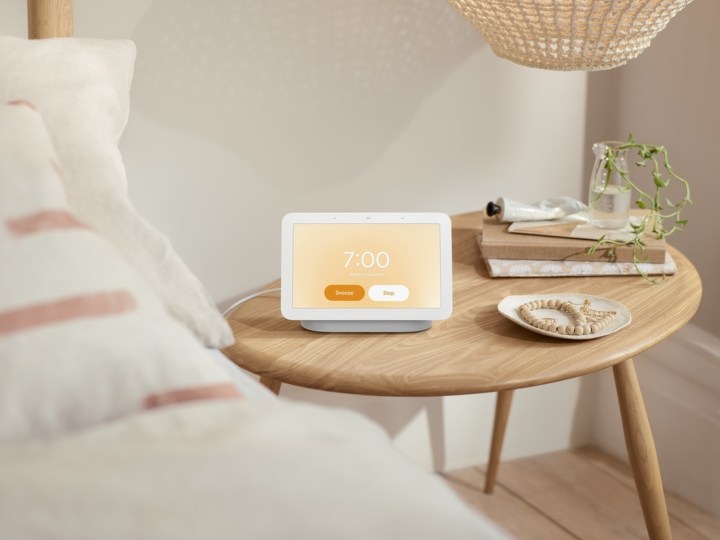It knows when you are sleeping, it knows when you’re awake …
Google’s latest smart display is breaking new ground in the health and wellness space. The Nest Hub (2nd Gen) is packed with useful features, but its newest addition is its Sleep Sensing capability. This feature allows the Nest Hub (2nd Gen) to know when you’re asleep, when you’re awake, and even what time you go to bed — all without an onboard camera.
The idea behind the Sleep Sensing feature is that over time, it will learn your personal sleep patterns and provide both personalized insights and recommendations to help you get a better night’s sleep. You can also access the information through the Google Fit app.

The Nest Hub has a variety of sensors, and the second-generation version uses Soli radar, a low-energy system that detects motion. The Hub analyzes your movement and breathing at night, listens for sounds with its built-in microphone, and evaluates the light through its ambient light sensor. A built-in temperature sensor looks for changes in temperature in the room. All of this information is compiled so that you can better understand outside factors that might influence the quality of your sleep. This is a fascinating implementation because we’ve explained how radar technology similar to this could redefine privacy in the smart home.
The Nest Hub’s 7-inch display also dims automatically at night to make the bedroom more conducive to sleep. The “Your Evening” page provides easy access to your alarm, compatible lights and connected devices, and allows you to start up soothing sounds to help you drift off. The Nest Hub’s Sunrise Alarm brightens the display to mimic the rising sun and increases the alarm volume gradually.

If you’re too tired to get out of bed, you can snooze the alarm with the new Quick Gesture feature. Just wave your hand to grab a few more minutes of shuteye.
For those worried about privacy, the Soli radar is only capable of detecting motion. It doesn’t provide detailed information. You can also choose to opt out of the Sleep Sensing feature. Google also assures users that audio data such as coughing or snoring during the night is processed on the device, which means that any conversations you have near it won’t be transmitted elsewhere. The Sleep Sensing feature will be available as a free preview until next year as Google works to improve the technology and make it even more useful.

Other details about the new smart display are scarce, but it shares a design similar to its predecessor. Much like Google’s other smart home solutions, like the Nest Mini and Nest Audio, the Nest Hub (2nd Gen) is designed with sustainably in mind — its plastic parts are fashioned from 54% post-consumer recycled plastic. It’ll be available in four colors — chalk, charcoal, sand, and mist. You can pre-order the new Google Nest Hub (2nd Gen) starting today for $100 through Google’s online store and other retailers.
Editors' Recommendations
- Blink Mini 2 vs. Nest Cam (Indoor): Which is the better affordable security camera?
- The most common Google Nest Mini problems and how to fix them
- Echo Show 8 vs. Nest Hub: Does Amazon or Google offer the best smart display?
- Nest Hub Max vs. Skylight Cal Max: Which is best for your home?
- Google Home adds new camera features and support for Nest Cam Outdoor




